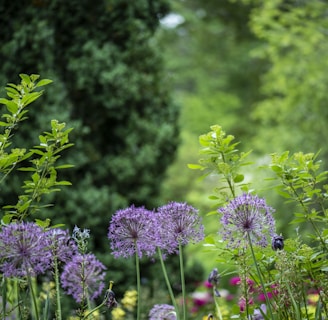Best Tips for Watering Plants Effectively
Watering is one of the most fundamental yet misunderstood aspects of gardening. While it may seem straightforward, watering plants correctly can make the difference between a thriving garden and one that struggles. Too much water can suffocate roots and promote diseases, while too little leaves plants dehydrated and stunted. In this comprehensive guide, we’ll explore the best practices for watering plants effectively, including timing, frequency, and techniques. Along the way, we’ll recommend useful tools like hoses, watering cans, and moisture meters to make your watering routine efficient and enjoyable.
GARDENING TIPS & TOOLS
12/5/20244 min read


Understanding Your Plants’ Water Needs
Every plant has unique water requirements depending on its species, growth stage, and environment. For example, succulents and cacti thrive in dry conditions and need minimal watering, while leafy vegetables like lettuce require consistent moisture to grow well.
Factors Affecting Water Needs
Plant Type: Native plants or drought-tolerant species often need less water compared to tropical or moisture-loving varieties.
Soil Type: Sandy soils drain quickly, requiring more frequent watering, while clay soils retain water and need less.
Weather Conditions: Hot, sunny weather increases evaporation, meaning your plants will need more frequent watering. Conversely, cool and cloudy days reduce water demand.
Tip: Invest in a book or app to learn more about the specific water needs of your plants.
When to Water Your Plants
Timing plays a crucial role in effective watering. Watering at the wrong time can lead to evaporation, fungal diseases, or water wastage.
Best Time to Water
Early Morning: Watering in the morning allows plants to absorb moisture before the sun evaporates it. This also prevents fungal growth, as leaves have time to dry out during the day.
Evening (if necessary): If mornings aren’t feasible, water in the early evening. Avoid late evening watering, as damp leaves overnight can attract pests and diseases.
Recommended Product: Orbit Hose Timer: Automate your watering schedule to ensure consistent timing.
How Much Water Do Plants Need?
The amount of water your plants need depends on factors like soil moisture, plant type, and weather. Overwatering is a common mistake and can be as harmful as underwatering.
The “Soak and Dry” Method
This technique is one of the best ways to water most plants. Water deeply to encourage roots to grow downward, then allow the soil to dry slightly before watering again.
For garden beds: Use a hose with a soaker attachment to distribute water evenly.
For potted plants: Water until you see drainage from the bottom of the pot.
Tip: Avoid shallow watering, which encourages roots to grow near the surface, making plants more vulnerable to drought.
Recommended Product: Dramm Soaker Hose: Ideal for deep, even watering in garden beds.
Techniques for Watering Plants
The technique you use to water your plants can greatly affect their health.
Direct Watering at the Base
Always aim to water at the base of the plant rather than overhead. Overhead watering can wet the foliage, increasing the risk of fungal diseases like powdery mildew.
Use a watering can with a long spout for precision.
For larger areas, a hose with an adjustable nozzle works well.
Recommended Product: Haws Watering Can: A classic, durable watering can with a fine spout for delicate plants.
Drip Irrigation
Drip irrigation systems are efficient and eco-friendly. They deliver water directly to the soil at a slow rate, reducing evaporation and runoff. This method is particularly useful for busy gardeners or large gardens.
Recommended Product: Rain Bird Drip Irrigation Kit: Easy to install and customizable for any garden size.


Avoiding Common Watering Mistakes
Mistakes in watering can be costly, but with awareness, they are easy to avoid.
Overwatering
Overwatering can lead to root rot, suffocation, and wasted water. Signs of overwatering include yellowing leaves, mushy roots, and moldy soil.
Use a moisture meter to check soil moisture before watering.
Recommended Product:
XLUX Soil Moisture Meter: A reliable tool to ensure you’re not overwatering.
Underwatering
Underwatering stresses plants, causing wilting, browning, or stunted growth. To prevent underwatering:
Check the top inch of soil for dryness.
Mulch around plants to retain moisture.
Adapting to Different Garden Areas
Different parts of your garden may have varying watering needs.
Lawns
Lawns need consistent watering to stay green and healthy. Use a sprinkler system to cover large areas efficiently. Water deeply once or twice a week rather than daily to encourage deep root growth.
Containers and Pots
Potted plants dry out faster than those in the ground. Check them daily during hot weather and water thoroughly until water drains from the bottom.
Vegetable Gardens
Vegetables like tomatoes and cucumbers thrive with consistent moisture. Install a drip irrigation system or water at the base to avoid wetting the foliage.
Water-Saving Tips for Budget-Conscious Gardeners
Gardening doesn’t have to be water-intensive. Here are some ways to conserve water while keeping your plants healthy:
Use Mulch: Apply a 2–3 inch layer of organic mulch around plants to reduce evaporation and keep soil cool.
Harvest Rainwater: Install rain barrels to collect water for use during dry spells.
Choose Native Plants: Native species are adapted to local conditions and often require less water.
Recommended Product: FCMP Outdoor Rain Barrel: An affordable and eco-friendly way to save water.
Why Proper Watering Matters
Correct watering practices are the backbone of successful gardening. Healthy, hydrated plants are more resistant to pests, diseases, and environmental stressors. Efficient watering also conserves resources, saves time, and reduces your water bill.
Conclusion
Watering your plants effectively requires more than just turning on a hose. By understanding your plants’ unique needs, timing your watering sessions wisely, and employing proper techniques, you’ll create a garden that thrives. Incorporate tools like moisture meters, soaker hoses, and drip irrigation systems to simplify your routine and ensure accuracy.
By investing in quality products and adopting thoughtful watering practices, you’ll cultivate a beautiful and sustainable garden that flourishes season after season. Happy gardening!

